3 Ways to Measure Behavior Change

Whether quitting smoking, losing weight, or increasing physical activity, changing behavior is challenging. Behavior change is the process of modifying or altering our actions, habits, or attitudes toward achieving a specific goal. Habits are powerful. With about 40% of our everyday behavior repeated in the form of habits, they shape our very existence and, ultimately, our future. Habits, in fact, are key to wellness.1
Measuring behavior change is just as important as promoting it. The significance of measuring behavior change lies in its ability to provide feedback on the effectiveness of programs or interventions. It enables organizations to identify the areas that require improvement, adjust strategies, and track progress toward set goals. It also provides an opportunity to identify the impact of interventions on employees’ health, well-being, and productivity.
There are three main methods for measuring behavior change: self-evaluation, risk movement analysis, and engagement rates. Let us examine each of these methods.
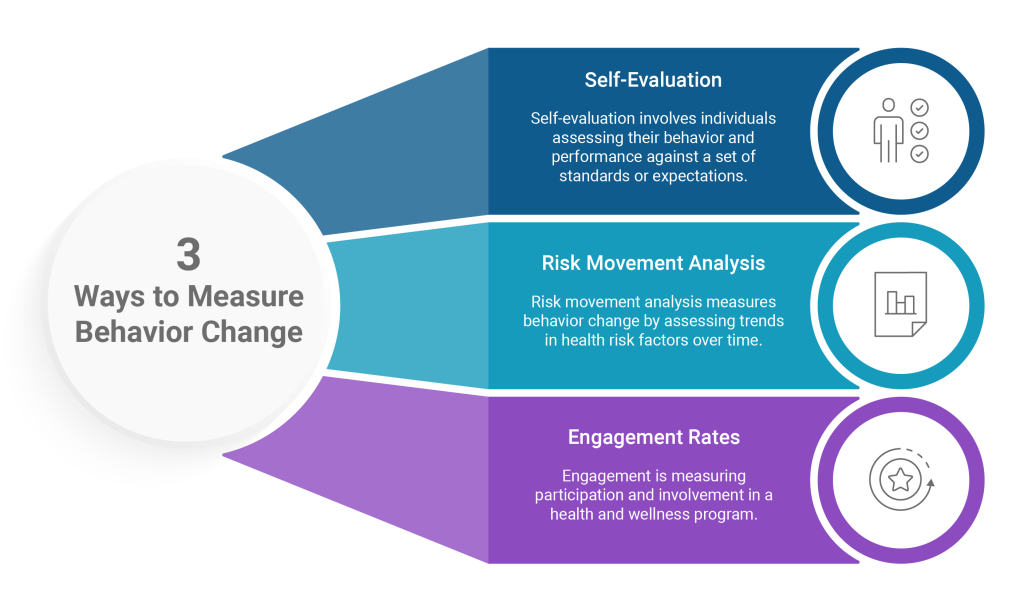
Self-Evaluation
Self-evaluation involves individuals assessing their behavior and performance against a set of standards or expectations. Self-evaluation tools can include periodic surveys or assessments conducted online, on paper, or assisted through an in-person or telephonic interview with a health coach or navigator. This method helps measure behavior change by allowing individuals to reflect on their progress and identify areas for improvement. When using this method, it is important to measure in the initial stages the individual’s readiness to change the health behavior and the behavior over time.2
Self-evaluation is a simple, cost-effective, easy-to-implement method for measuring behavior change. Other benefits of using self-evaluation to measure behavior change include enabling individuals to take ownership of their behavior change journey, promoting self-awareness and reflection, and encouraging self-motivation.
The illustration below demonstrates an initial assessment from PDHI’s ConXus Action Plans. With these self-management tools, the participant is asked to complete an initial survey, identify goals, work through a personalized lesson plan to develop healthy habits, and evaluate progress.
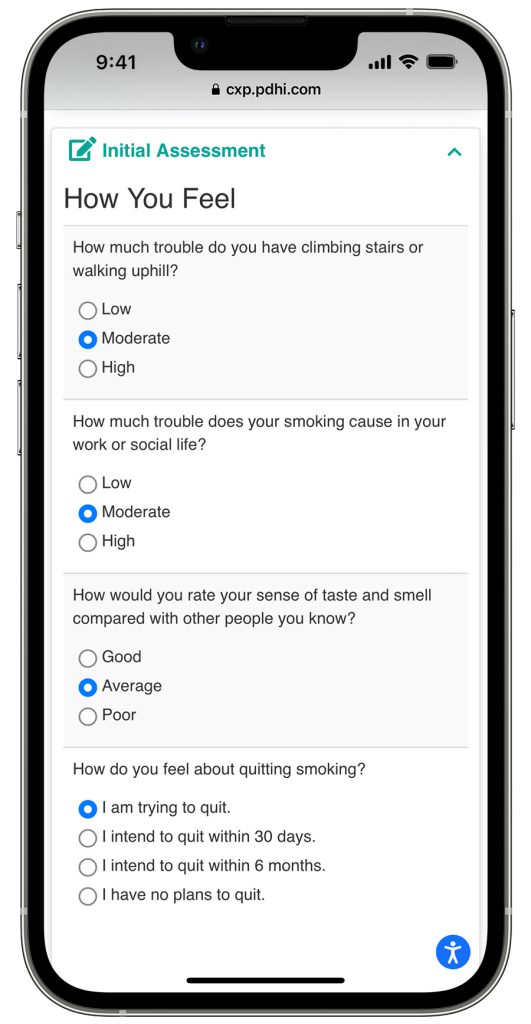
Risk Movement Analysis
Risk movement analysis measures behavior change by assessing changes in health risk factors over time. Common sources of data to inform risk movement include:
- Health assessment responses
- Biometric screening data
- Condition-specific changes
- Claims data
Risk movement analysis for an individual or a group provides objective data to measure progress. It is an effective way to determine which interventions are successful at changing behaviors.
The illustrations below demonstrate physical health risks for an individual and for a population.
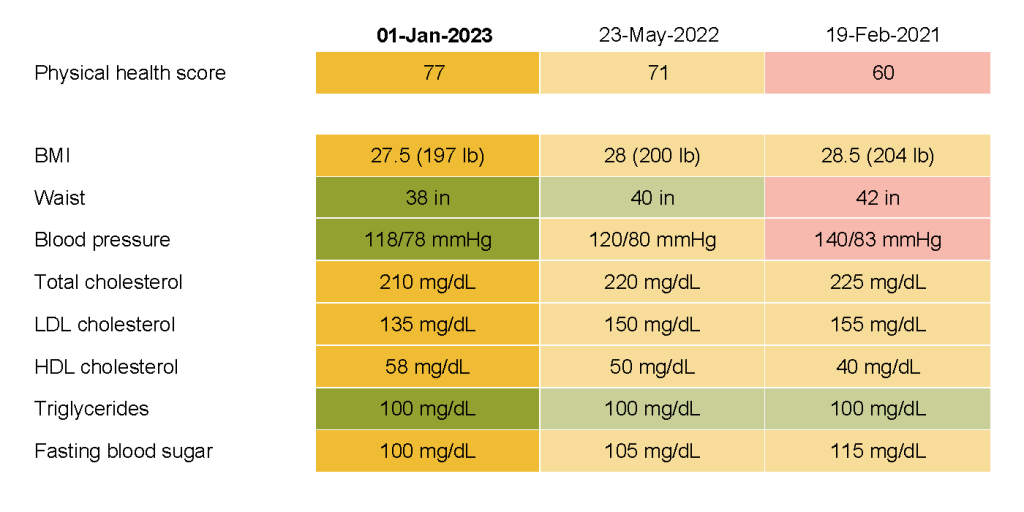
Sample Population Risk Movement Report
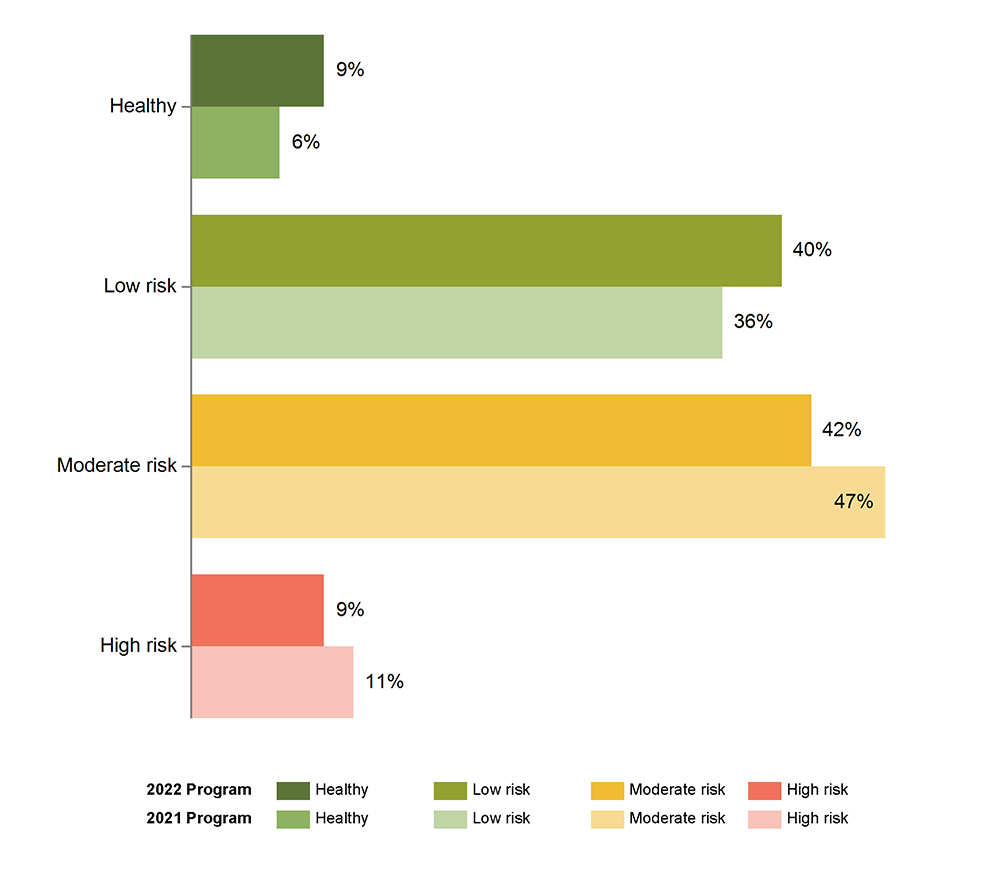
Engagement Rates
Measuring engagement requires more than counting how many times someone logs into their account or program. While logging in may indicate the initial step with the program, it does not provide any insight into the quality of that engagement or whether it is leading to meaningful behavior change. Therefore, engagement should be measured by tracking individuals’ actual progress and participation in health and wellness program activities. Examples of engagement rate metrics include goal completion, participation in a particular activity, and earning incentives.
The illustration below represents measuring engagement through the percentage of program enrollees who qualified for the incentive by completing activities that lead to healthy behaviors.
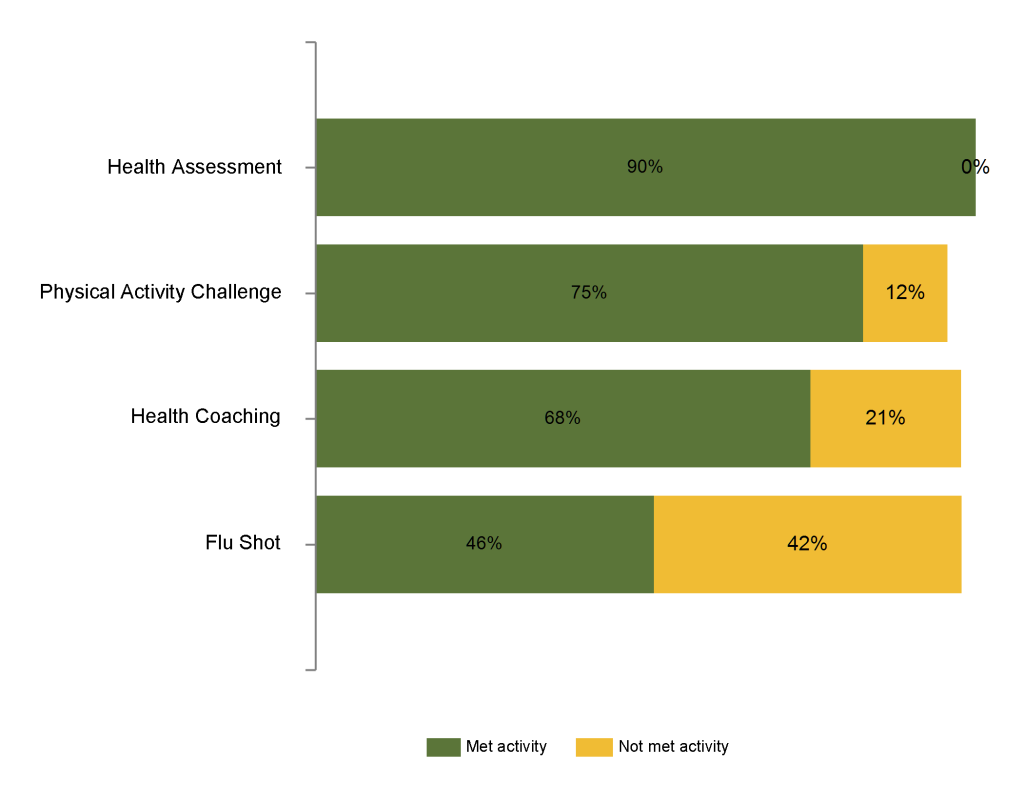
Comparison of the Three Methods
Self-evaluation, risk movement analysis, and engagement rates effectively measure behavior change. Each method has its advantages and disadvantages. Self-evaluation is cost-effective but relies on subjective data. Risk movement analysis provides objective data but is resource intensive. Engagement rates are easy to measure but do not provide detailed data. Choosing the best methods for your organization depends on your program’s goals, budget, and resources.
Common Mistakes Organizations Make When Measuring Behavior Change
Some common mistakes organizations make when measuring behavior change include relying on subjective data, not collecting data regularly, and not involving individuals. Using multiple sources of data and more than one method provides the best insight.
Conclusion
Measuring behavior change is essential to determine the effectiveness of digital health solutions. Self-evaluation, risk movement analysis, and engagement rates effectively measure behavior change. Each method has advantages and disadvantages, and choosing the best method depends on your organization’s goals, budget, and resources. Organizations can measure behavior change effectively and achieve their health program goals by avoiding common mistakes and using these methods.
The ConXus Platform provides a comprehensive suite of health improvement tools to support wellness programs based on three evidence-based behavior change models: the transtheoretical model (TTM), Sustainable Change Sequence, and Fogg Behavior Model. Using a combination of self-evaluation, risk movement analysis, and measuring engagement rates, the platform can measure successful changes in health habits.
Further Reading
Stoewen DL. Dimensions of wellness: Change your habits, change your life. Can Vet J. 2017 Aug;58(8):861-862. PMID: 28761196; PMCID: PMC5508938.
Lacey, S.J., Street, T.D. Measuring healthy behaviours using the stages of change model: an investigation into the physical activity and nutrition behaviours of Australian miners. BioPsychoSocial Med 11, 30 (2017).

